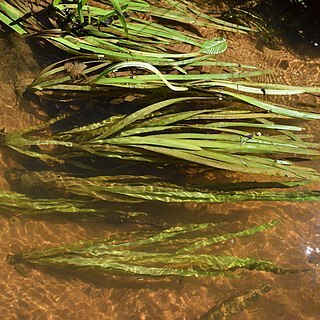Lvs very thin, to 2 m, 3-10 mm wide, seldom more; staminate scape stout, 3-15 cm, the fls only 1-1.5 mm wide; stamens erect, with short, ± connate filaments, the androecium surrounded by a ring of short hairs; pistillate fls white, the sep 3.5-6.5 mm; staminodia adnate to the short style; fr 5-12 cm. In quiet water; N.S. and Que. to Minn. and S.D., s. to trop. Amer., and irregularly widespread elsewhere. July-Oct. Ours are var. americana.
Scapes: staminate scapes 30--50 mm, submersed; pistillate scapes elongate, projecting flowers to surface. Leaves 10--110 ´ 0.3--1.5 cm; leaf blade 3-zoned longitudinally, margins entire to serrate. Flowers: staminate flowers 1--1.5 mm wide; stamens 2, filaments basally connate; pistillate flowers solitary, rarely in umbel-like clusters. 2n = 20.


